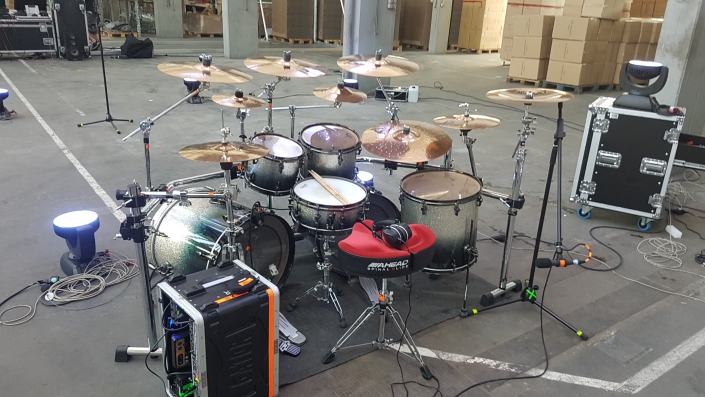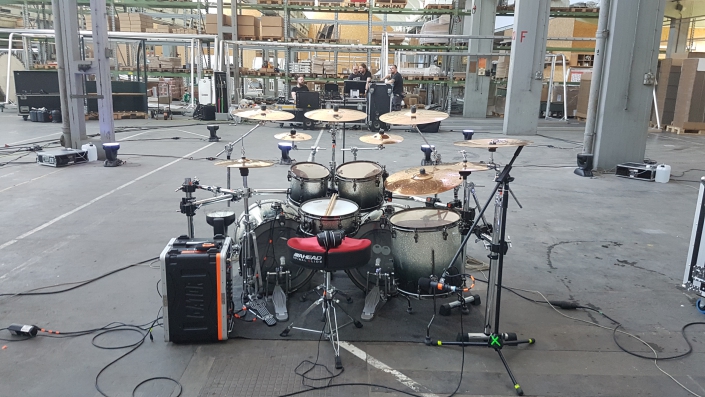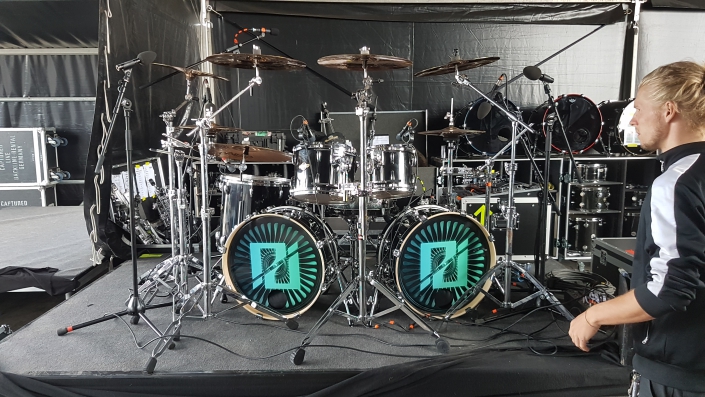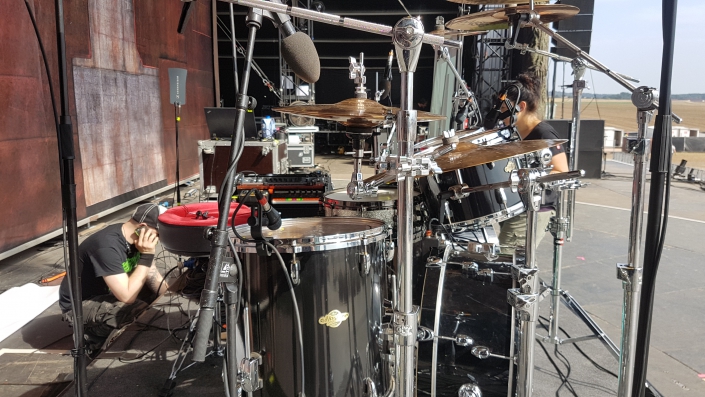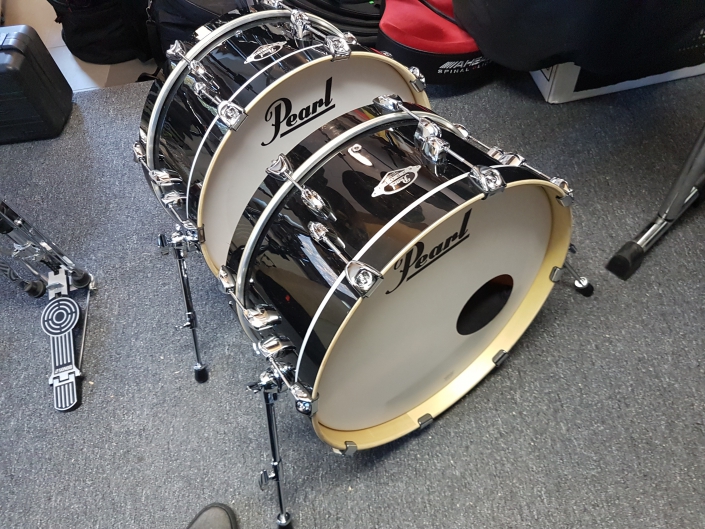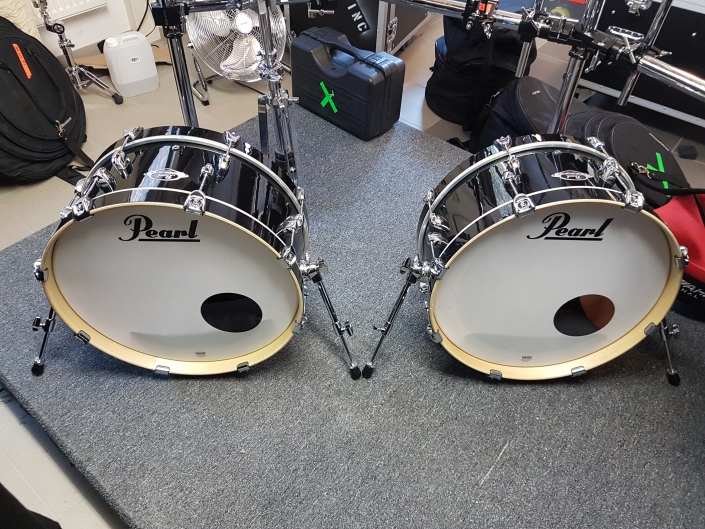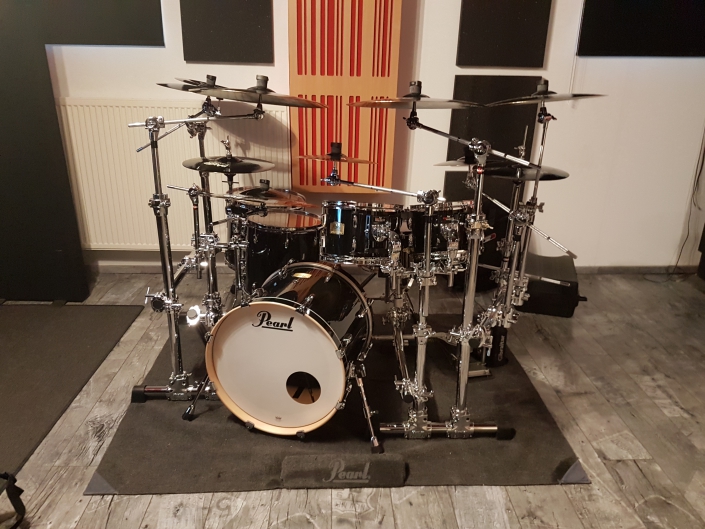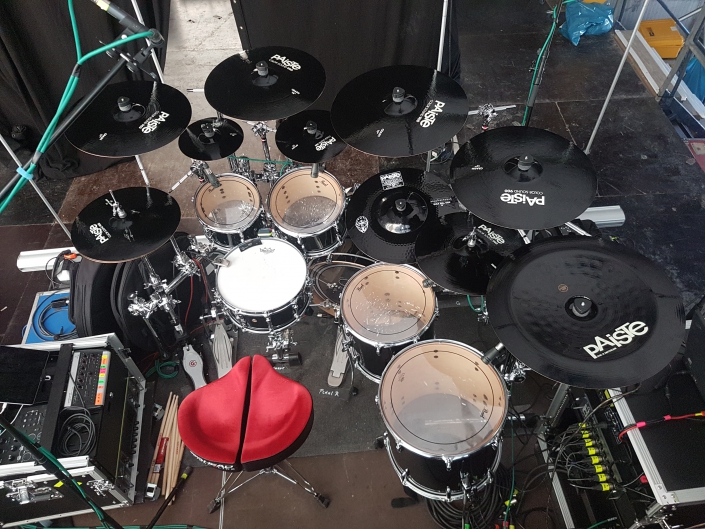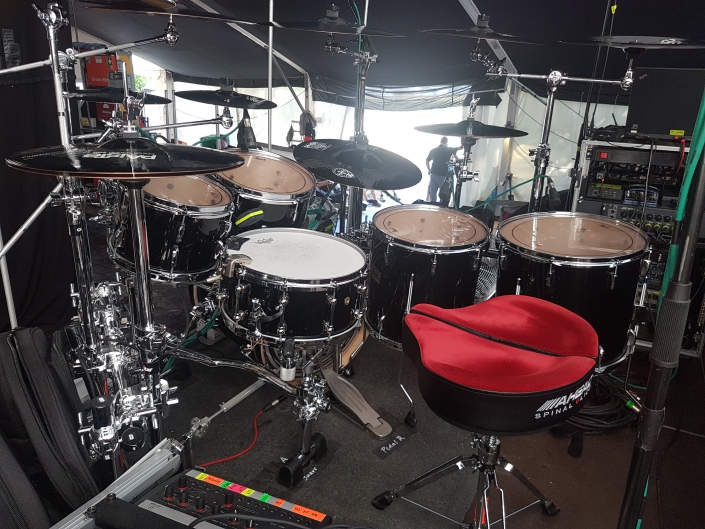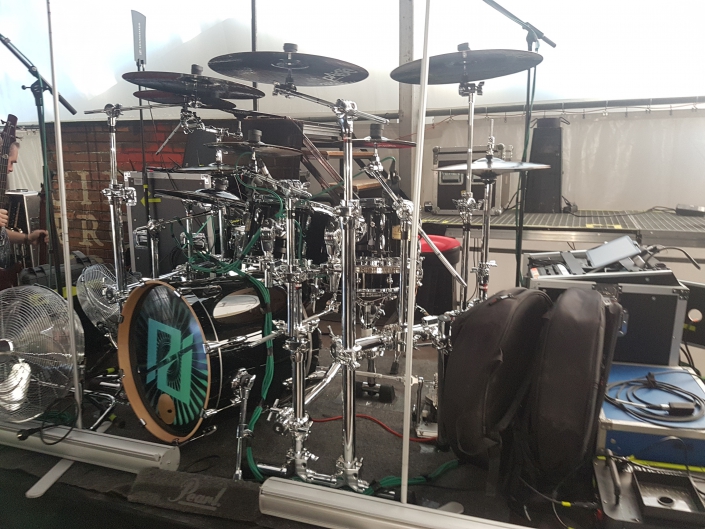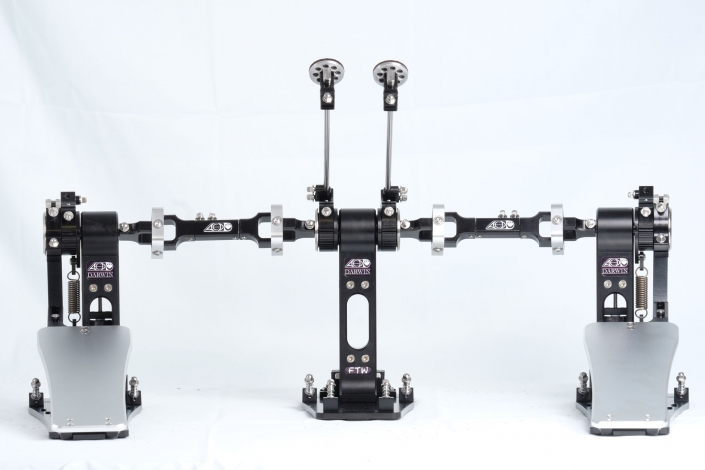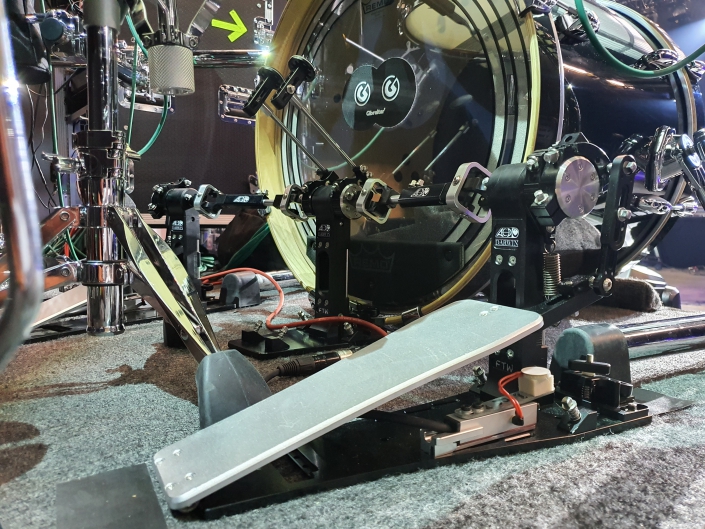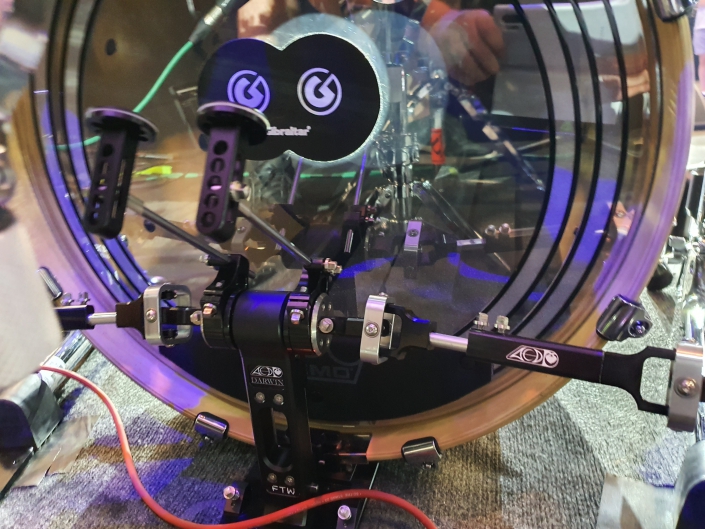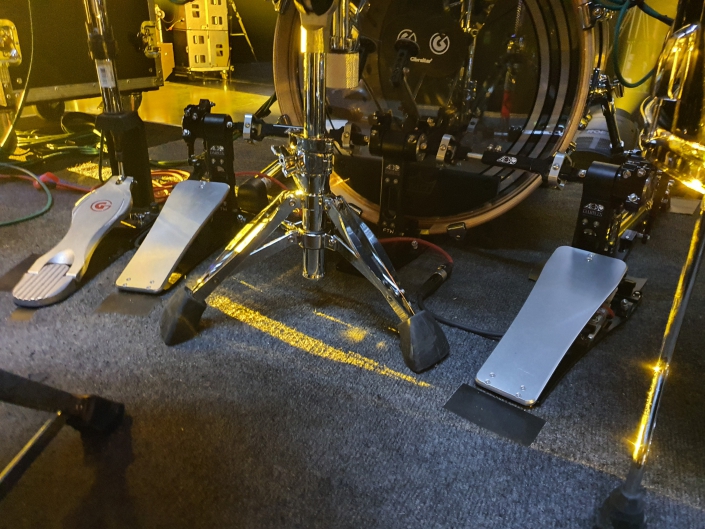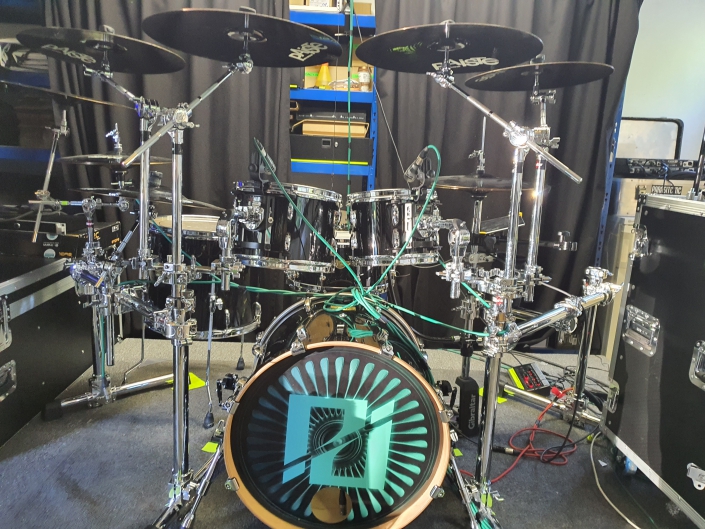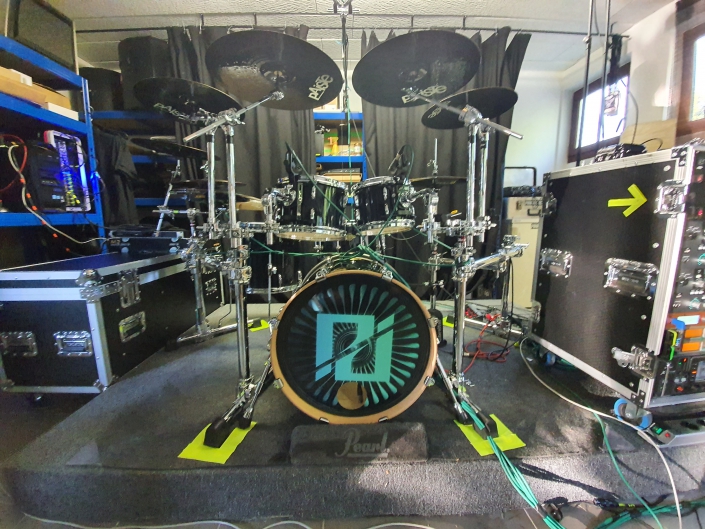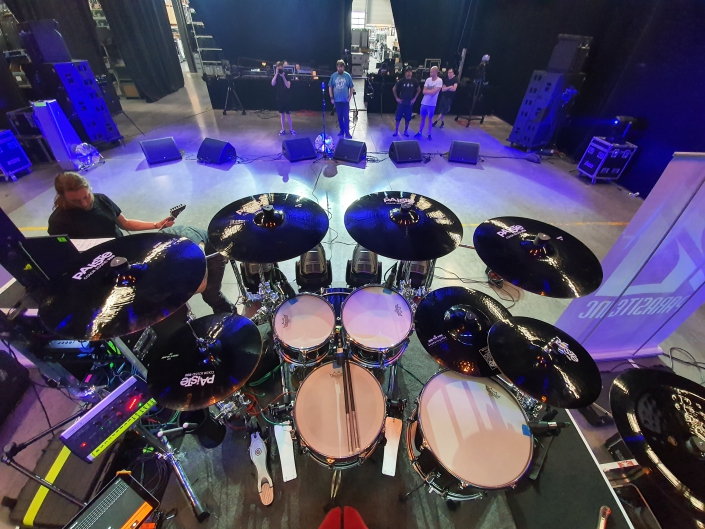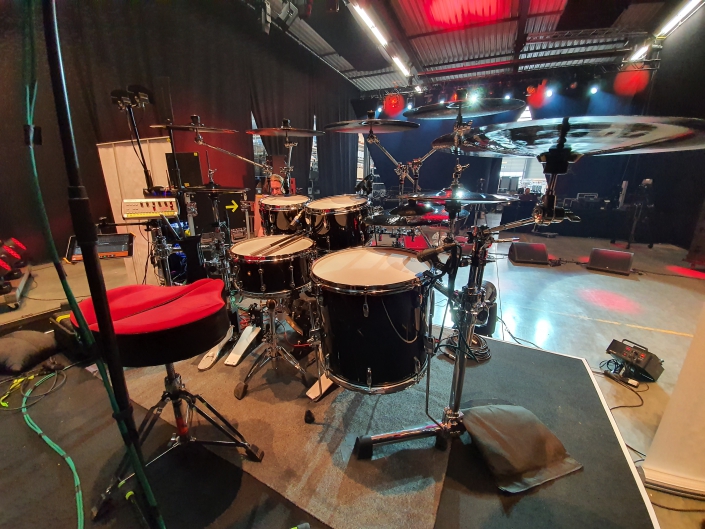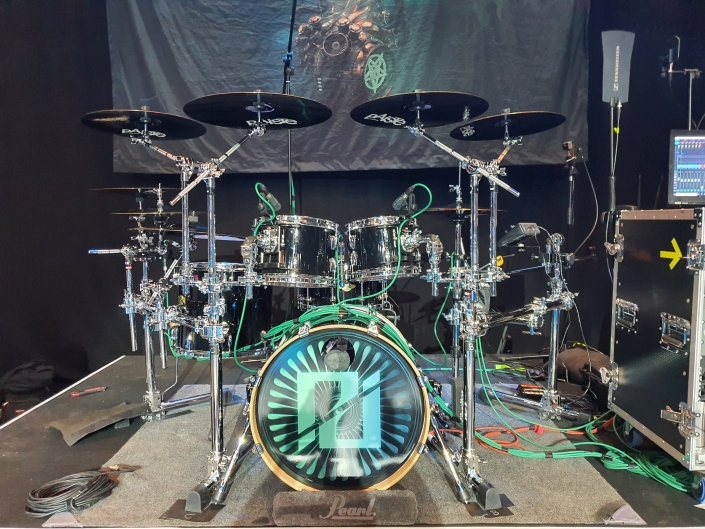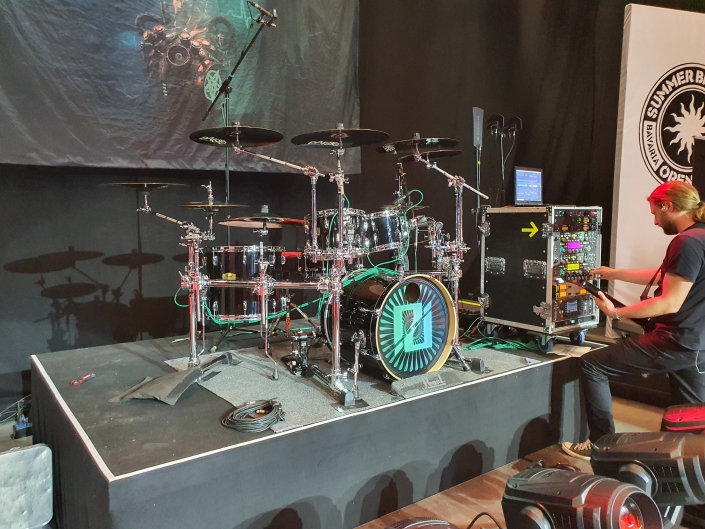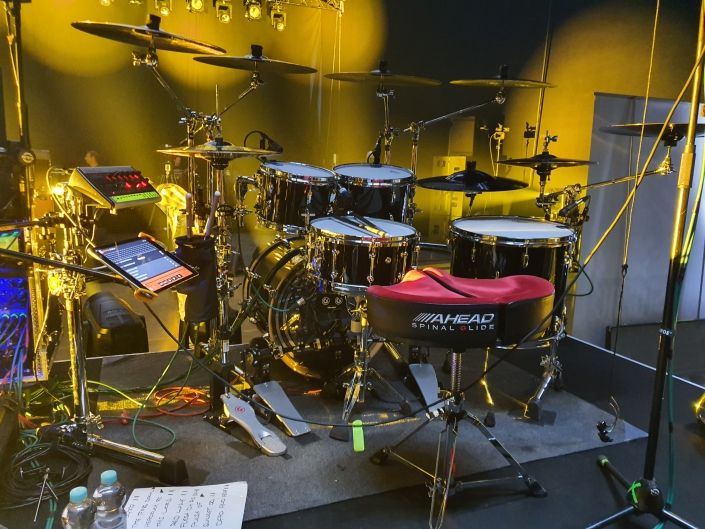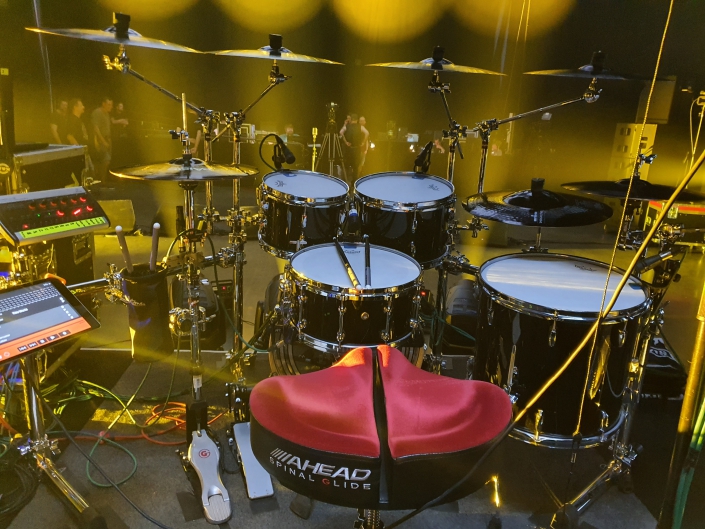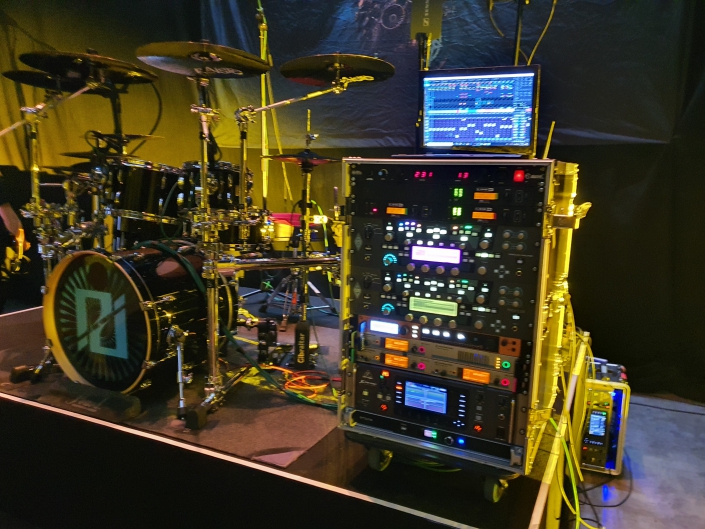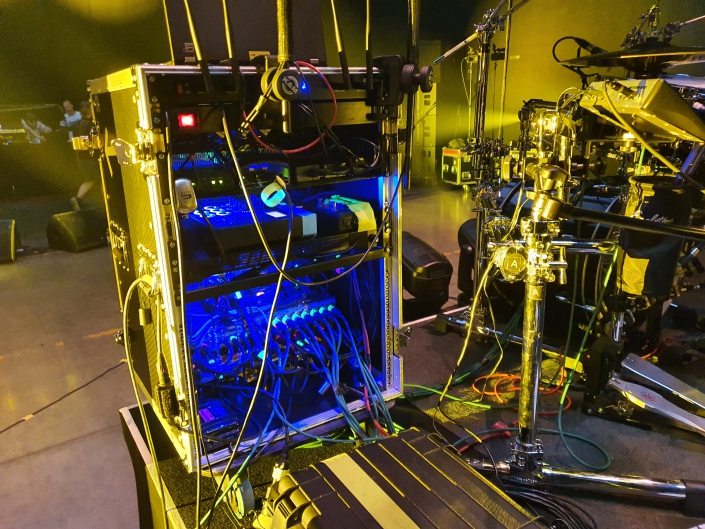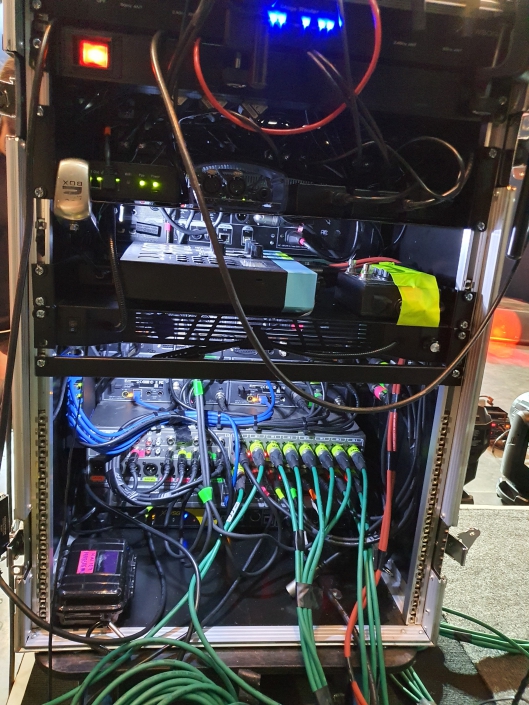Tech Talk: Drums & backing tracks
Hello everyone,
Benni here. Today I want to give you a tour of my live drum setup, how it progressed over the years and how we use our backing track system to get all the keyboard parts and effect sounds on stage. This post might be more interesting for the musicians among you – and especially the drummers -, but it might also be a good read for everyone, who is interested in how we try to get the best possible live sound on stage, with the least amount of things to carry around and the shortest possible setup time. And if you are a touring musician, you know that this combination is almost impossible to achieve, haha.
But let’s start with the drum kits first and how (and why) it evolved over the years:
Sonor Ascent period
The drum kit I used in the ‘Once and for All’ video is one, I played for a long time. It’s a Sonor Ascent Kit with two 20” bass drums, 10×8”, 12×9” toms, a 16×16” floor tom and a 14×5.5” snare. The cymbals were Paiste Alphas: 16”, 17” & 18” Rock crashes, 10” & 12” Rock Splashes, a 20” Metal Ride, a 16” China and two pairs of 14” Rock Hihats. The bass drum pedals were two Speed Cobras back then. The hardware was mostly from Gibraltar.
The pros of this setup were:
- Two bass drums simply look way more metal than one!
- It’s symmetrical
- Two bass drum pedals are easier to trigger and more natural feeling than a double pedal
The cons were:
- Two bass drums, eventhough they are only 20”, simply won’t fit in the band van
- It takes up a lot of space on stage
- It’s time consuming to setup correctly, since it’s one rack that can’t be carried around easily
- It’s not black and doesn’t always match the color scheme we want to go for on stage
2 x 20×8″ toy-bass drum period
Since more often than not it wasn’t possible to bring my own drum set to our gigs, because of the space limitation of the band van, I came up with a solution to more or less use the same setup live:
I ordered two custom build 20×8” bass drums, which only take the space of one 20×16” bass drum. That way I was able to use the shared drum kit on stage, adding my two custom bass drums and was good to go. I didn’t have to care, if there were two bass drums available in the backline at the location or not. And I didn’t have to care about the tension of the bass drumheads and if it would trigger correctly.
The pros of this setup were:
- Still two bass drums, but easy to carry around
- The setup is symmetrical and similar to mine, no matter what’s available in the backline
The cons were:
- 20×8” bass drums look strange and you have to explain each and every gig why the are looking like child toys, haha.
- Sometimes the rest of the drum set from the backline sounds like crap or has strange tom sizes, which definitely is not ideal for a consistent sound on stage
Evolution of the current setup
Over the time we changed our live setup quite a bit. Instead of depending on the monitor mix from the FOH and the monitor wedges on stage, we switched to In-Ear-monitoring quite early in the band history. This was especially necessary, since we wanted to use backing tracks to be able to have the keyboards and the sound effects from the album on stage as well.
One big problem was, that the drum monitor mix from the FOH back to the stage, was quite inconsistent. It often distracted me quite a bit and didn’t match the rest of the monitor mix.
The solution was to bring our own, fully mic’d drum set to each and every show. That way we have pretty much the same monitor sound every time we play, and the drum set also sounds the same in the FOH mix.
The biggest issue with that solution again was the space in the band van. So, I tried to minimize the setup to take as little space as possible (on stage and in the van) and to be as easy to setup as possible. The first step was to remove one bass drum. But this led to an asymmetrical setup, which I really don’t like and which takes a lot of unnecessary space on stage.
This is where ACD Unlimited came in. It’s a small drum pedal company from Austria, which build an awesome Middle-Pedal, that allows a completely symmetrical setup with only one bass drum.
Additionally, I split the rack into two symmetrical parts which can be carried on stage easily, even with all the hardware, toms, mics, cymbals already attached to the rack – and it also fits into relatively small hardware cases.
Current setup
So my current setup is a Pearl Session Classic set with a 20×16” bass drum, 10×7”, 12×8” toms & a 16×14” floor tom (so compared to my old Sonor set, all toms are also shallower to minimize the room they take up in the van). The snare is a Pearl Maple Premium 14×6.5” snare. The cymbals are Paiste 900 Blacks: 2×17”,18”,19” crashes, 2×15” hihats, 18” China and an 18” Paiste 2002 Giga Bell Ride. The reason for the small ride is that it also allows a much more compact setup and besides that: It really sounds absolutely nice! For a short time, I used an additional 14×12” floor tom and two 10&12” splashes, which I removed again to keep the setup more compact. The hardware is now completely from Gibraltar, except for the bass drum pedal.
The bass drum triggers are One-Trigger V3 directly mounted on the bass drum pedal with a Roland RT30K-Backup-Trigger on the bass drum. The drum module is a Roland TM6. The tom heads are Remo Ambassador X Coated, on the bass drum I use a Remo Powersonic Clear head and I play a Powerstroke 4 Coated snare head.
The pros of this setup are:
- As compact as it gets, given the amount of cymbals and toms
- It’s almost completely symmetrical
- Very easy and fast to setup before the show
- It’s all black, which looks pretty cool in my opinion
The cons are:
- Doesn’t look as cool as a double bass setup and doesn’t look that impressive because it’s soo small, haha
Backing tracks & InEar
We use a Cymatic Audio uTrack24 for the backing tracks and also for light/fog and other MIDI controlling. The uTrack is remote controlled by an Ipad, which is also my job on stage. For the band monitor mix and FOH premix, we use a Behringer X32. Additionally, I can control my monitor mix via a Behringer Powerplay P-16 Personal Mixer. I’m not using wireless In-Ears, my InEars (StageDiver SD-2) are directly plugged into the Behringer Personal Mixer.
The mastermind behind the whole system is Kai. Nobody else in the band really understands how everything is wired and how the mixer is setup, haha. He spent so many nights in the rehearsal room working on the system. It’s completely crazy that it – so far, knock on wood! -, never failed us. It sometimes did have a hick up, but nothing that he couldn’t solve before the show started.
More tech talk in the future?
I hope you found this post interesting. As I said in the beginning: This time it was all a bit more technical than our usual Club of the Dead posts.
Let us know in the comments, if you are interested in more content like this. We could also do a Guitar Rig rundown, for example, or a complete rundown of our live rack. We know that there are quite a few musicians in the Club, so if this would be helpful or interesting to you: Let us know!

